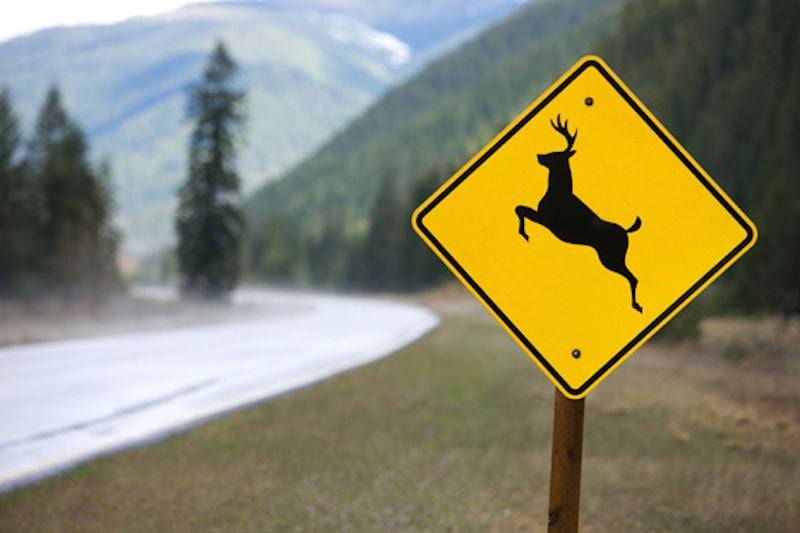Staying safe during your commute can be a challenge, especially when it involves an unexpected deer or other animal running across the road.
Animal-vehicle collisions are most common in the fall, when animals are migrating to other habitats for the winter.
The Centers for Disease Control and Prevention estimates that nearly one-quarter of all animal and vehicle crashes result in some form of bodily injury or vehicle damage. Here are some tips to keep you safe and protect our wildlife.
12 Tips to Avoid Animal-Vehicle Collisions
- Remain alert at all times and watch out for animals. Be aware that where there is one animal, there are probably others: young following their mother, or a male pursuing a female. According to the Animal Protection Institute, 70% of deer-car collisions result after the driver slowed down for one deer and then accelerated, failing to see another.
- Follow posted speed limits and avoid distractions (cell phones, food) inside the car.
- Slow down if you see an animal up ahead, as they are generally unpredictable. Sounding your horn with a long blast may scare them away, although it could also scare them into darting in front of you. Many times, an animal will freeze when it sees the bright light from your headlights. Your best defense is to slow down and allow the animal(s) to move away from the road at their own pace.
- Use your high beams at night whenever possible to see animals more easily.
- Slow down on blind curve areas of the roadway.
- Have your vehicle’s brakes and tires checked regularly to ensure they are in safe working order.
- Slow down at designated animal crossing areas marked by road signs. These signs indicate the area has a lot of animal traffic and an increased potential for accidents. There is often more animal traffic across roads bordered by woods or fields, or where streams cross under the road.
- Watch out for movement and shiny eyes on the roadsides. Slow down if you see anything suspicious.
- If you see an animal in front of you, do not swerve because it may cause you to hit another vehicle or side rail, or to lose control altogether. Instead, brake immediately.
- Always wear a seat belt; it’s your best safety defense against injury.
- Avoid throwing trash onto the roadside. It attracts wildlife, and it’s illegal.
- Teach your teenage drivers how to avoid and react to animal collisions. Minimize their driving at night and on country roads, especially between October and December.
If You Hit an Animal
- Pull off to the side of the road and call the state patrol or local police department.
- Do not attempt to move the animal if it is lying in the middle of the road.
- Do not leave your vehicle to check on an injured animal, as it may still be alive and potentially dangerous to you.
- Call your automobile insurance agent to report the accident.



